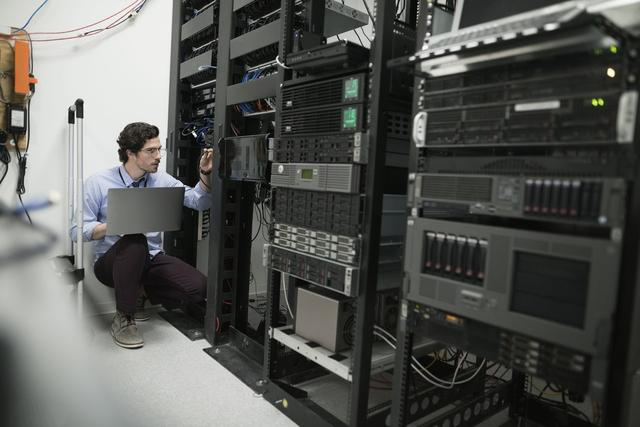The Difference Between Tower, Rack and Blade Servers
A server is a type of computer that runs faster, loads more heavily, and is more expensive than a normal computer. The server provides computing or application services for other clients (such as PCs, mobile phones, ATMs, and even large-scale equipment such as train systems) in the network. The server has high-speed CPU computing capability, long-term reliable operation, powerful I/O external data throughput and better scalability. Generally, people divide servers into three types: tower, rack, and blade according to their different shapes and structures. So what are the differences between these three types of servers, and what aspects are they suitable for?

Tower server
Tower server is generally seen the most. Its shape and structure are similar to ordinary PCs, but slightly larger, and there is no uniform standard for its shape and size.
The motherboard of the tower server has strong expandability and many slots, and a lot of space is often reserved inside the chassis of the tower server for redundant expansion of hard disks and power supplies. This kind of server does not require additional equipment, does not require much storage space, has good scalability, and can be configured very high, so it has a wide range of applications and can meet common server application requirements. This type of server is especially suitable for common entry-level and workgroup server applications, and the cost is relatively low, and the performance can meet the requirements of most small and medium-sized enterprise users.
The current market demand space is still very large. However, this type of server also has many limitations. When it is necessary to use multiple servers to work at the same time to meet high server application requirements, it is not suitable because of its relatively large size, large space occupation, and inconvenient management.
Rack server
The rack server is actually a product under industrial standardization. Its appearance is designed according to a unified standard, and it is used in conjunction with the cabinet to meet the server-intensive deployment needs of enterprises.
The main function of the rack server is to save space. Since multiple servers can be installed in one cabinet, it can not only occupy a smaller space, but also facilitate unified management. The width of the rack server is 19 inches, and the height is in U (1U=1.75 inches=44.45 mm). There are usually several standard servers of 1U, 2U, 3U, 4U, 5U, and 7U.
The advantage of this kind of server is that it occupies a small space and is convenient for unified management. However, due to the limitation of internal space, the expandability is relatively limited. For example, most 1U servers only have 1 or 2 PCI expansion slots. In addition, heat dissipation performance is also a problem that needs to be paid attention to.
In addition, equipment such as cabinets are required. Therefore, this kind of server is mostly used by large enterprises with a large number of servers. It is hosted by a dedicated server hosting agency, especially the servers of many websites currently use this method. This kind of server is limited in terms of scalability and heat dissipation, so the stand-alone performance is relatively limited, and the scope of application is also limited to a certain extent. It often only focuses on certain applications, such as remote storage and network services. In terms of price, rack servers are generally 20 to 30% more expensive than tower servers with the same configuration.
Blade server
The blade server is a low-cost server platform of HAHD (High Availability High Density, high availability and high density). It is specially designed for special application industries and high-density computer environments. Its main structure is a large main chassis, which can be plugged into Many "blades", each of which is actually a system motherboard, is similar to an independent server, and they can start their own operating systems through the local hard disk. Each blade can run its own system and serve different designated user groups without any relationship with each other. Moreover, system software can also be used to integrate these motherboards into a server cluster.
In cluster mode, all blades can be connected to provide a high-speed network environment, share resources, and serve the same user group. By inserting new blades in the cluster, the overall performance can be improved. And because each blade is hot-swappable, the system can be easily replaced and maintenance time is reduced to a minimum.
Blade servers are more space-saving than rack-mounted servers. At the same time, the problem of heat dissipation is more prominent. It is often necessary to install a large powerful fan in the chassis to dissipate heat. Although this type of server saves space, its cabinets and blades are not cheap. It is generally used in large-scale data centers or fields that require large-scale computing, such as banking, telecommunications, financial industries, and Internet data centers.
At present, saving space, facilitating centralized management, being easy to expand and providing uninterrupted services have become new requirements for next-generation servers, and blade servers can just meet this demand, so the market demand for blade servers is constantly expanding and has a good market prospect.



